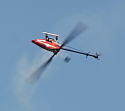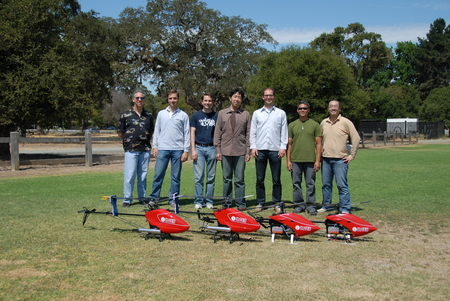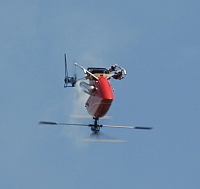Robotic helicopters teach themselves stunts
Last updated Sep 3, 2008 — 4046 views A team of computer science graduate students at Stanford University has demonstrated autonomous robotic helicopters that teach themselves difficult flying maneuvers. They do it by “watching” how an expertly piloted remote-control helicopter flies, and then performing the stunts by themselves.
A team of computer science graduate students at Stanford University has demonstrated autonomous robotic helicopters that teach themselves difficult flying maneuvers. They do it by “watching” how an expertly piloted remote-control helicopter flies, and then performing the stunts by themselves.
The project team set out to “push the state-of-the-art in autonomous helicopter flight,” by demonstrating “extreme aerobatics under computer control.”
After watching expert radio-control (RC) pilot Garett Oku fly complex stunts with virtually any RC helicopter — even ones he’d never flown before — team member Adam Coates began to wonder if computers could perform the stunts as well.

Stanford’s robotic helicopter
(Click each thumbnail to enlarge; photos by Ben Tse and Eugene Fratkin, courtesy of Stanford Univ.)
Early on, the team determined that simply mimicking Oku’s joy-stick finger movements when flying an RC helicopter wouldn’t work, due to uncontrollable variations, such as wind gusts.
So, the team decided to implement an “apprenticeship learning” system that would teach the helicopters how to execute complex flight maneuvers by monitoring numerous parameters associated with Oku’s flying of an RC helicopter.
To gather the required data, instruments both on the RC helicopter and on the ground measure the RC helicopter’s position, direction, orientation, velocity, acceleration, and spin. All this data is transmitted to a ground-based computer, which processes it and, in turn, sends updated flight instructions 20 times per second to the autonomous helicopter.
To prepare the “apprenticeship learning” system for action, the team had Oku put his RC helicopter through various flight routines.
“As Oku repeated a maneuver several times, the trajectory of the helicopter inevitably varied slightly with each flight,” the team explains. “But the learning algorithms … were able to discern the ideal trajectory the pilot was seeking. Thus the autonomous helicopter learned to fly the routine better — and more consistently — than Oku himself.”
The following team-produced video offers a glimpse of the project’s success.
Robotic helicopters teach themselves stunts
(Click to play)
The team claims its helicopters have succeeded at performing “the most difficult aerobatic maneuvers flown by any computer controlled helicopter.” Georgia Tech aeronautics and astronautics professor Eric Feron, who worked on autonomous helicopters while at MIT, agrees that the range of maneuvers done by the students’ helicopters is “by far the largest” of any autonomous helicopter.
Feron is even more impressed by the approach used to accomplish the task. “The machine teaches itself how to do this by watching an expert pilot fly,” he says. “This is amazing.”
The team (pictured below) includes graduate students Pieter Abbeel, Adam Coates, Timothy Hunter, and Morgan Quigley, working under the direction of professor Andrew Ng.

Participants in Stanford’s robotic helicopter project
(Click to enlarge; Photo by Ben Tse, courtesy of Stanford Univ.)
Further information — including research papers, articles, and videos — about Stanford’s fascinating autonomous helicopter project is available here.



Amazing. If this technology was used in a war time scenario, whats to stop a computer on the fritz or from a machine that has been a re-programed to change its main objective ? Is this considered a first phase of A.I. ? Or is there still to much human interaction ?